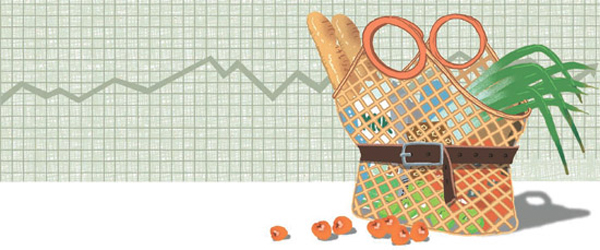More to truth than just statistics

Recently, the Financial Times raised suspicions that the manufacturing sector’s PMI (purchasing managers’ index) released by the Chinese government in July may have been manipulated. The official number shows expansion while an independent survey by HSBC suggests a deterioration of business conditions. Economic statistics are used to diagnose trends in the market and predict the future. But when statistics reflect wishful thinking, they no longer function as forecasts.
Similarly, I am at a loss when I look at our government’s official statistics. They seem far from reality. For example, I found the recently released consumer price index hard to believe. Officially, consumer prices rose at an annual rate of 1.4 percent in July, and the government calls the prices stable, noting that they’ve been rising at 1 percent annually for nine consecutive months.
But I must not be the only one shocked whenever I have gone grocery shopping in the past nine months. Since I don’t keep a meticulous record of my purchases, I cannot say precisely how much prices have gone up or down. Nevertheless, I buy less and pay more. Prices at cafes and restaurants keep going up, too, by 500 won ($0.45) here or 1,000 won there.
Real-world prices are not stable. The Bank of Korea’s expected inflation rate was 2.8 percent in June, more than twice the consumer price index’s 1 percent. The Ministry of Security and Public Administration surveyed the cost of living for average citizens in metropolitan cities and provinces around the nation in the first half of the year. The price of haircuts went up 16 percent and lodging 12.4 percent. Prices for common food items, such as naengmyeon (cold noodles) and bibimbap (rice mixed with vegetables), are 5 percent to 6 percent higher.
Lately, the government and dairy industry are fighting over milk prices. Companies want to raise the retail price because of a hike in raw milk prices, but the government is putting on the brakes to keep consumer prices stable. An adjustment seems necessary because companies are trying to raise prices more than raw milk price increase. If milk prices go up, the stability of the consumer price index may come to an end next month.
But will our daily lives be any easier or more stable when milk prices are controlled and “low and stable prices” are statistically maintained? We all know that good statistics don’t make reality any more beautiful.
*The author is an editorial writer of the JoongAng Ilbo.
by YANG SUNNY










with the Korea JoongAng Daily
To write comments, please log in to one of the accounts.
Standards Board Policy (0/250자)